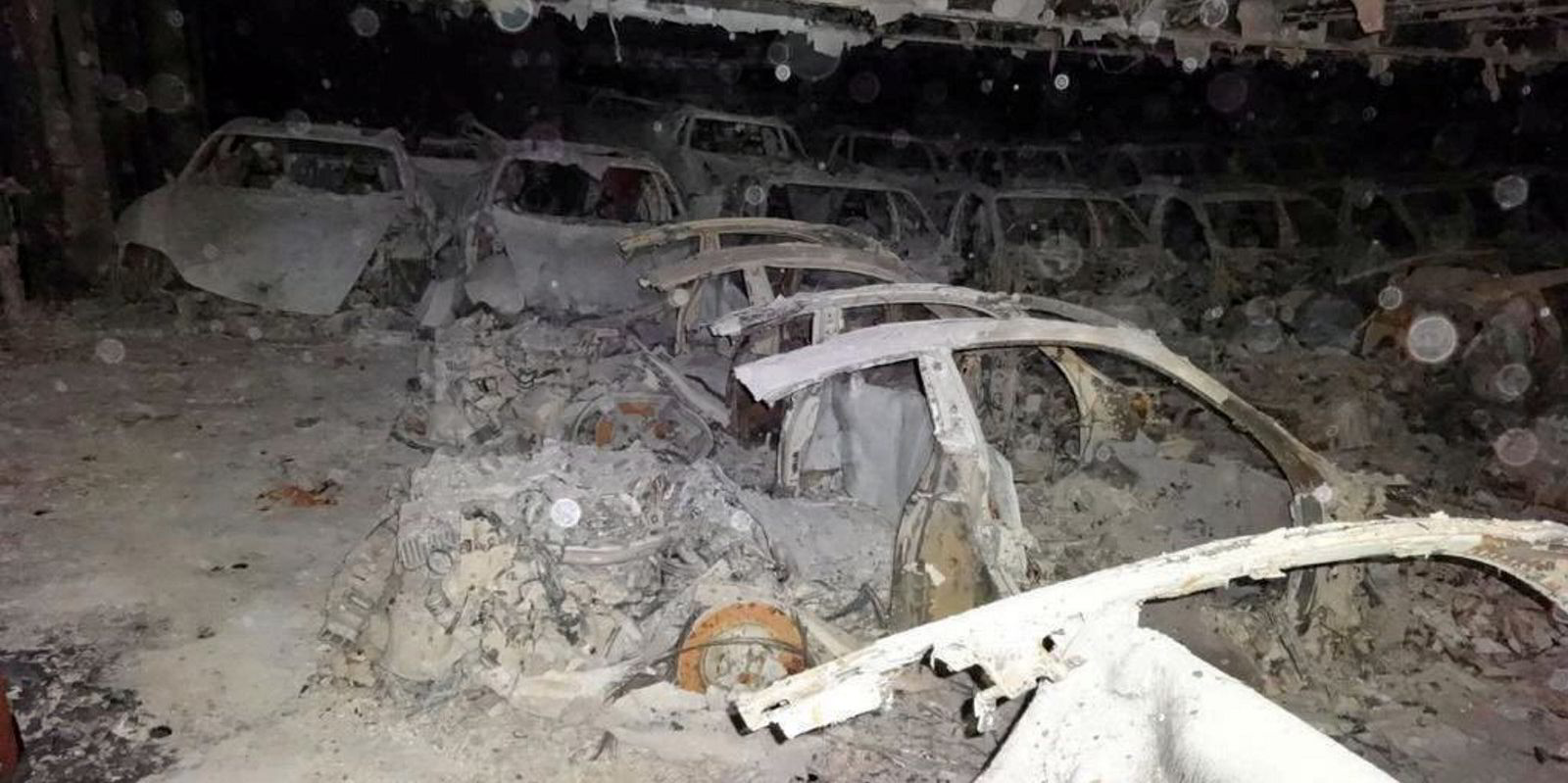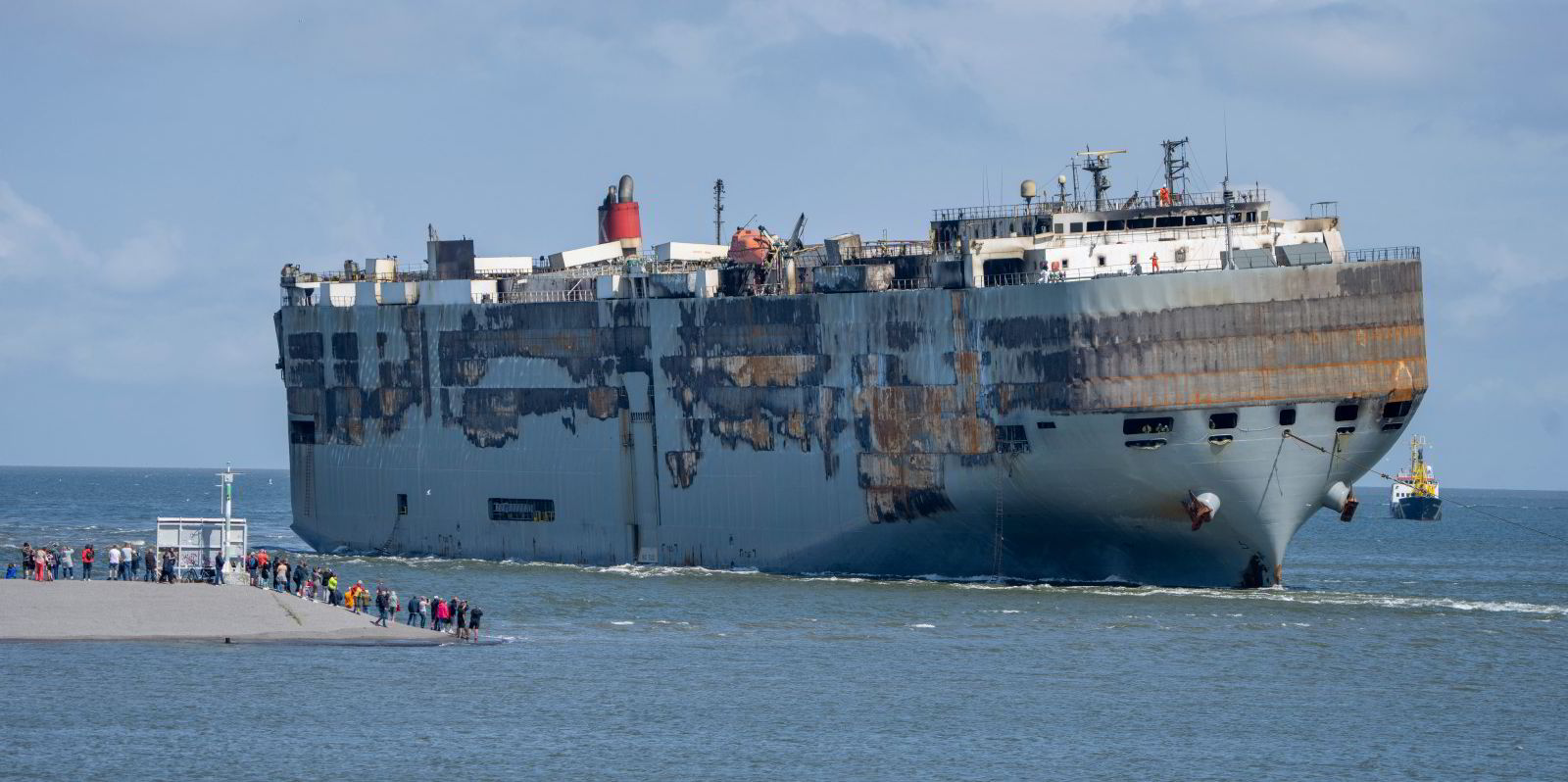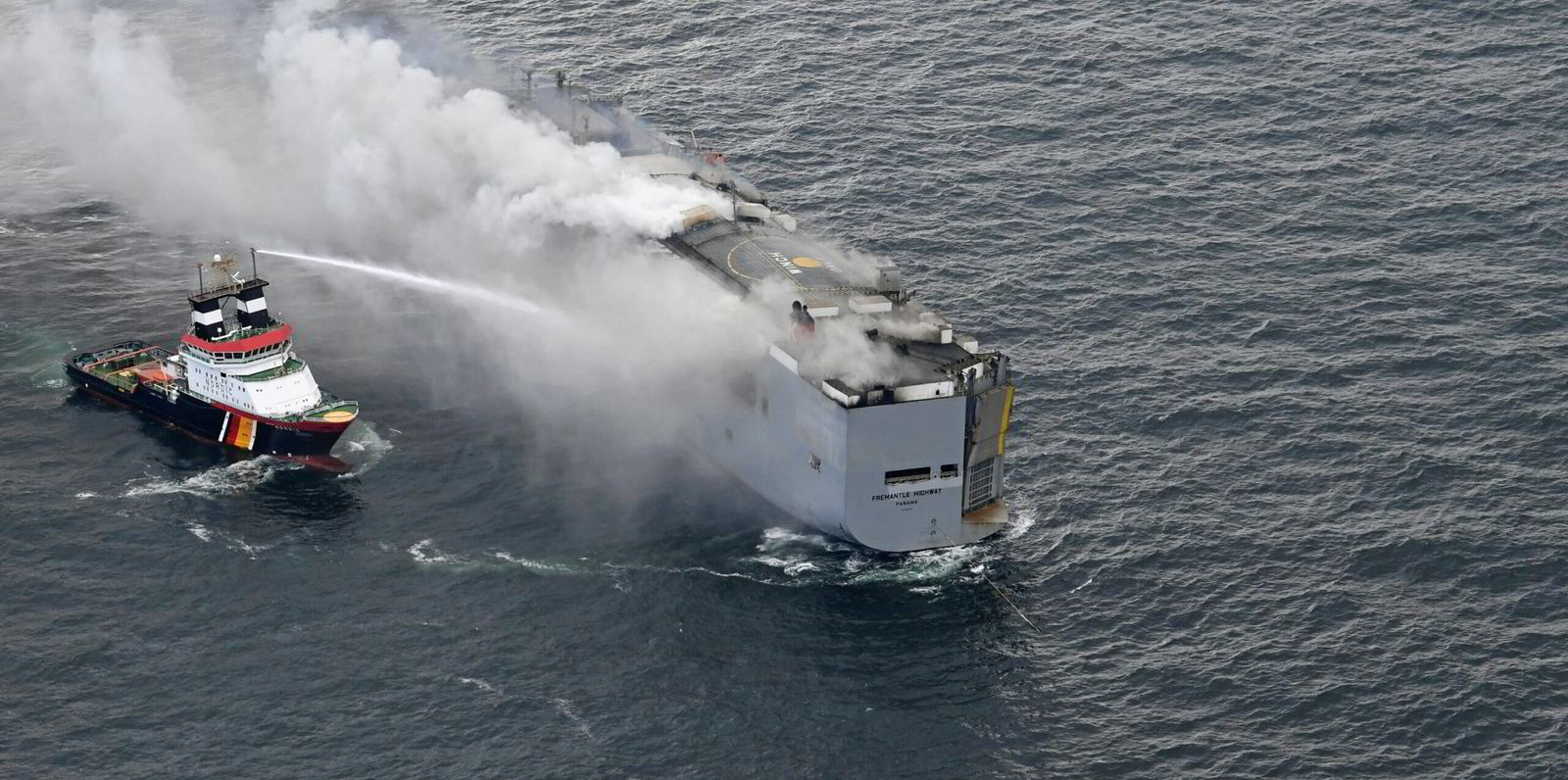Photos of the damage caused by a catastrophic fire on the 6,210-ceu car carrier Fremantle Highway (built 2013) have reignited a debate over the possible cause of the blaze.
A grainy photo has emerged of the charred remains of the $100m cargo of what appears to be melted high-value German cars.
It is being suggested by some experts that the blackened remains include a row of Porshe Taycan electric sports cars.
The dream car for environmentally conscious speed enthusiasts is the same vehicle linked to a fire that destroyed the 6,400-ceu car carrier Felicity Ace (built 2005).
The photos appeared on the Twitter page of German politician Andreas Mrosek. He has been campaigning for the safer transportation of electric vehicles.
Although he did not comment on the cause of the fire, he wrote on his Twitter page displaying the photo, “E-cars are dangerous goods and must be treated as such. Imagine an e-car fire on a sea ferry! Evacuate 200 passengers! Bad situation for captain and crew!”
However, the contention that the photo shows burned-out EVs seems at odds with earlier reports that all 500 EVs on board were among the 1,000 cars on the lower deck that survived the blaze fully intact.
The reports were attributed to salvor Boskalis, which is in charge of the salvage operation at the Dutch port of Eemshaven.
Boskalis has since said it did not want to make any comment on the possible cause of the fire.
Under investigation
The cause of the fire is currently under investigation.
Boskalis is presently involved in washing down the wreckage prior to environmental waste disposal.
The cars that survived the fire are to be unloaded for inspection by the cargo owners.
Cargo that is involved in a casualty of this size is usually written off even if it remains intact.
The salvage operation will have to be completed before mid-October, when the Fremantle Highway will have to leave the Eemshaven.
The Fremantle Highway caught fire in the North Sea off the Dutch coast on 26 July, leading to the full emergency evacuation of crew.
The ship, owned by Japan’s Shoei Kisen Kaisha, was on charter to K Line and heading to the Far East from Europe.





